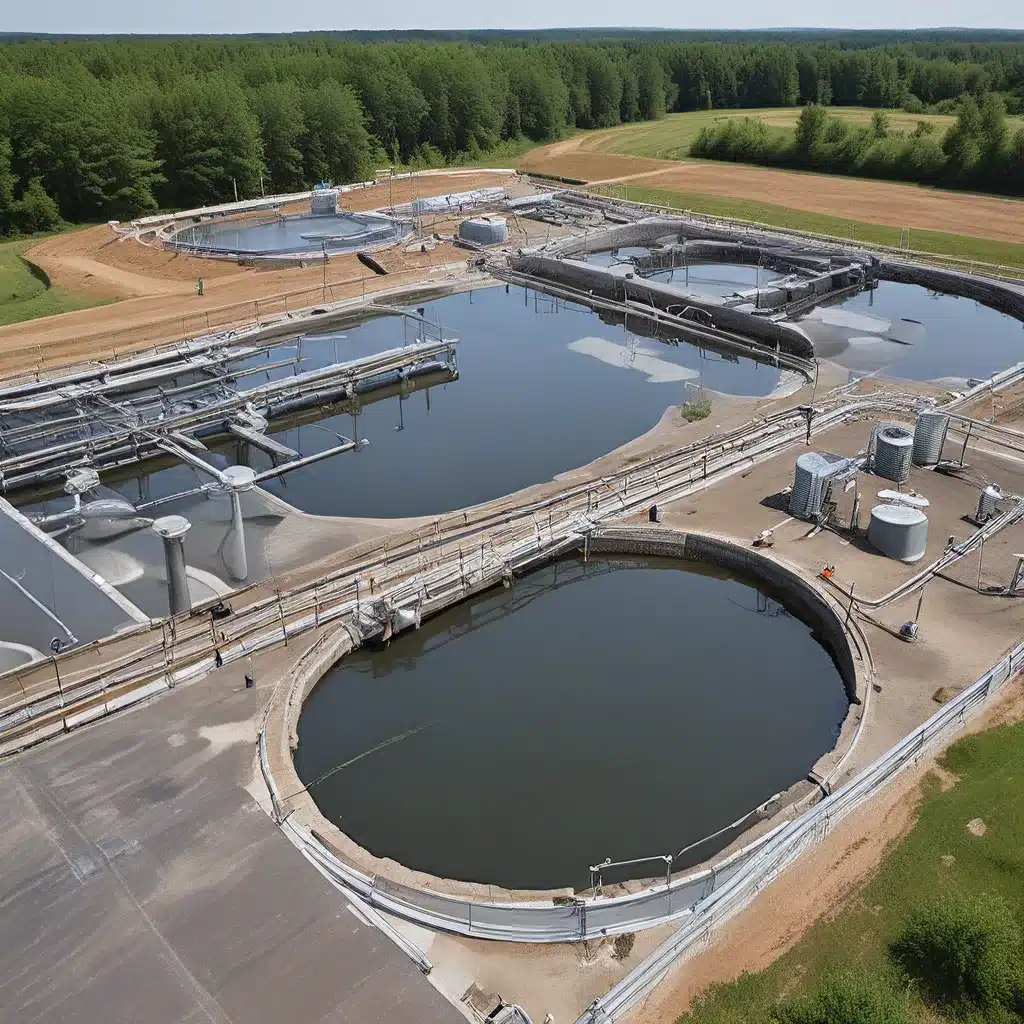
Harnessing the Power of Sustainability: A Wastewater Treatment Odyssey
As I stood at the edge of the wastewater treatment plant, the faint hum of machinery and the gentle gurgling of the settling tanks created a soothing symphony. But beneath the tranquil surface, a silent revolution was unfolding – one that could transform the way we power these essential facilities.
You see, wastewater treatment plants are the unsung heroes of our modern world, silently processing billions of gallons of used water every day. But did you know that they also happen to be some of the biggest energy consumers in our communities? In fact, these facilities can account for up to 40% of a municipality’s total energy usage, adding over 45 million tons of greenhouse gases to the atmosphere each year.
It’s a staggering statistic, to be sure. But what if I told you that there’s a way to not only reduce this energy burden, but also transform these facilities into self-sustaining powerhouses? Welcome to the world of integrating renewable energy into wastewater treatment – a journey that promises to revolutionize the way we think about these essential services.
The Energy Efficiency Equation
Let’s start by taking a closer look at the energy challenge facing wastewater treatment plants. As a utility manager, I know all too well that energy costs can make up a whopping 25-30% of a facility’s total operating and maintenance budget. That’s a significant chunk of change that could be put to much better use – upgrading infrastructure, expanding service, or even lowering rates for consumers.
The good news is that there’s a lot of low-hanging fruit when it comes to improving energy efficiency. A simple energy audit can help identify areas where energy-intensive processes like pumping and aeration can be streamlined, often resulting in cost savings of 15-30% with payback periods of just a few months to a few years. The EPA’s Energy Management Guidebook for Wastewater and Water Utilities is an invaluable resource, walking utilities through the step-by-step process of analyzing their energy usage and prioritizing efficiency upgrades.
But what if we took it a step further? What if we could not only reduce our energy consumption, but also generate our own renewable power right on-site? This is where the true potential of wastewater treatment facilities really starts to shine.
Harnessing the Power of Renewable Energy
As it turns out, wastewater treatment plants are surprisingly well-suited for renewable energy integration. Let’s start with the most obvious option: solar power. By installing solar panels on the rooftops of buildings or covering unused land around the facility, these plants can generate clean, sustainable electricity to power their operations. And the best part? Solar technology has become increasingly affordable and efficient, making it a viable option for even smaller-scale facilities.
But solar power is just the tip of the iceberg. Anaerobic digesters, which are already a common feature of many wastewater treatment plants, can be used to generate biogas – a renewable fuel that can be used to power combined heat and power (CHP) systems. These CHP systems essentially turn the facility into a self-sustaining power plant, using the free fuel from the digesters to generate both electricity and thermal energy for heating and cooling. Studies have shown that CHP systems can reduce a wastewater plant’s energy costs by as much as 50%, making them a truly game-changing technology.
But the renewable energy possibilities don’t stop there. Some facilities are even experimenting with wind turbines, fuel cells, and microturbines to further diversify their energy mix and minimize their reliance on the traditional grid. And for those who don’t want to invest in the equipment themselves, there’s always the option to purchase renewable energy certificates (RECs) or contract with a third-party provider to manage the renewable energy generation on-site.
A Sustainable Future for Wastewater Treatment
As I look out over the tranquil landscape of the wastewater treatment plant, I can’t help but feel a sense of excitement about the future. These facilities, once energy-guzzling relics of the past, are poised to become beacons of sustainable innovation, transforming themselves into self-sufficient, renewable-powered powerhouses.
Of course, the journey won’t be without its challenges. Navigating the complex web of regulations, incentives, and technology options can be daunting for even the most seasoned utility manager. But the potential rewards – both financial and environmental – are simply too great to ignore.
Imagine a world where wastewater treatment plants not only clean our water, but also power our communities with clean, renewable energy. Where these unsung heroes become the driving force behind a greener, more sustainable future. It’s a vision that’s well within our reach, and one that I’m proud to be a part of.
So, the next time you flush the toilet or turn on the faucet, remember the incredible machines working tirelessly behind the scenes. And know that with a little bit of renewable energy integration, these facilities can become the ultimate champions of sustainability – powering our communities while protecting the planet we call home.
After all, at Inland Waters Inc., we believe that the future of wastewater treatment is bright, renewable, and empowered. Join us on this journey as we redefine what’s possible.


